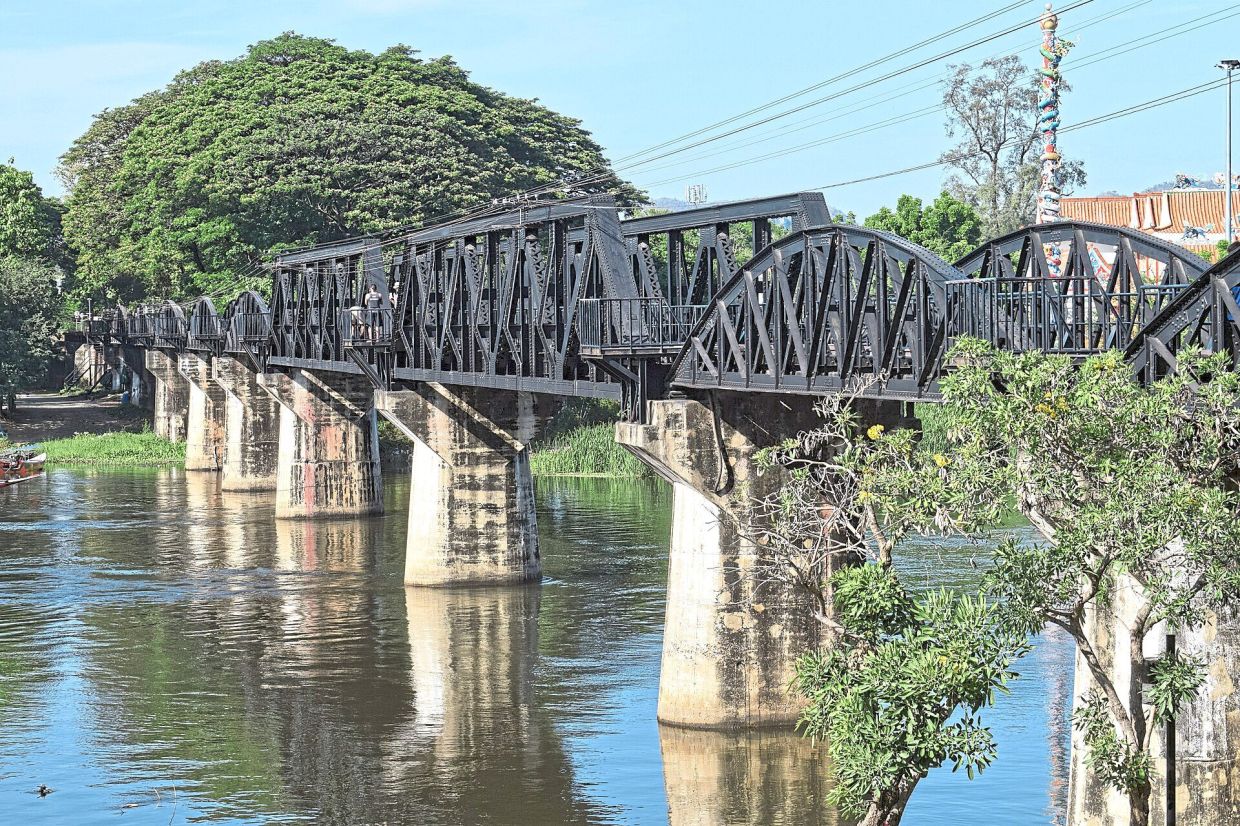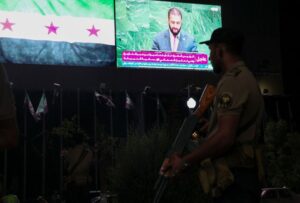WHEN HE gazed at the black steel arches of a railway built on stone pillars, Capt (Rtd) Ali Amran Mat Lawan, 68, felt a tinge of sadness as he recalled stories of the men who perished constructing the “Death Railway”, which links Ban Pong in Thailand to Thanbyuzayat in Myanmar.
The Burma Railway bridge, which spans the Khwae Yai River in Thailand’s Kanchanaburi Province, stands as a stark reminder of a time when blood, sweat and tears bore witness to the atrocities of World War II.
“I felt that it confirmed something for me – the indescribable anguish suffered by these men as they met their death,” Ali tells the Sunday Star of his visit to Thailand earlier this year.
Pangs of sorrow, passed down to him by his army predecessors, struck even deeper when Ali came across a stone monument engraved with the names of Malayan soldiers and labourers enslaved by the Imperial Japanese Army to build the railway.
Constructed between 1940 and 1943 by captured Allied soldiers and forced – many abducted – civilian labourers, the railway was intended as a supply route for weapons and troops. The men toiled endlessly under brutal conditions and were often subjected to physical torture as punishment.
Ali’s trip to Kanchanaburi was organised with V-Connect, a network of army veterans across South-East Asia, to coincide with the 80th anniversary of the end of WWII on Sept 2, 1945, when Japan formally signed the Instrument of Surrender, following its surrender under the Potsdam Declaration on Aug 15.
As the world marks one of history’s most pivotal events in its 80th anniversary, observers reflect on the lessons of the war and their meaning for future generations.
While he is too young to witness the second world war, Ali himself is no stranger to conflict; formerly attached to the 21st Royal Malay Regiment, he commanded a unit against communist insurgents during the 1970s and 1980s, and was part of the Malaysian Battalion or Mallbat’s United Nation’s peacekeeping mission in Bosnia and Herzegovina in 1993.
And if there is one truth he has drawn from the ordeals of WWII and later skirmishes, it is the resilience of the human spirit.
“We went through and learned lessons from difficult times to achieve the peace we have today,” he says.
Back in the day
Ali notes that while many elderly veterans alive today may lack the strength to retell their experiences in person, their tales of courage endure in literature, archives and film reels.
He recalls the heroism of Lt. Adnan Saidi, who fought to his last breath as he led a 42-man platoon of the 1st Malaya Infantry Brigade in the defence of Singapore against the 56th Infantry Regiment of the Imperial Japanese Army.
Adnan, regarded as a national hero in both Malaysia and Singapore, and his men stood their ground at Pasir Panjang Ridge near Bukit Chandu from Feb 12 to 14, 1942, despite being vastly outnumbered.
For two days they resisted relentless Japanese assaults, enduring heavy artillery fire, tank attacks, and crippling shortages of food, medical supplies and ammunition.
By the final day, with only a handful of grenades left, Adnan and his platoon engaged in brutal hand-to-hand combat, wielding bayonets against the enemy. Even after being shot, Adnan continued fighting before being ultimately captured and killed.
Ali says Adnan’s defiance was a reflection of an iron will rarely seen today.
“His bravery is immortalised in books and films. My seniors would often tell me Adnan’s story. They do not want it to be forgotten. Looking back, I desire to see a future where people continuously stand for the downtrodden and uphold their duty to the very end.”
A promising future
In early August, restored colourised footage from the UK National Archives showing Japan’s surrender made headlines worldwide.
The images also captured the moment in Kuala Lumpur when Japanese soldiers arrived at the Sultan Sulaiman Building and laid down their weapons, including katanas, in neat rows – a symbolic gesture marking the end of the war and occupation.
By and large, the occupation shattered the myth of European invincibility, says Universiti Malaya sociopolitical analyst Prof Datuk Dr Awang Azman Awang Pawi.
“The British, who had long claimed to be protectors, collapsed in mere weeks, while Asian powers – Japan – dominated Malaya. This humiliation of colonial prestige inspired nationalist leaders to believe independence was possible.”
He notes that post-war, political organisations such as Umno, leftist movements and trade unions drew strength from wartime experiences. For Malays, Japanese policies of limited empowerment – such as Malay-language education and military training – fostered a sense of political awakening.
“For the Chinese, the brutal treatment under Japanese rule and their resistance role heightened solidarity and political mobilisation. Collectively, these experiences crystallised a shared desire to chart Malaya’s destiny, laying the groundwork for independence in 1957.”
Many of the Indian labourers in Malaya were duped into or kidnapped for work on the “death railways” in South-East Asia.
“Like other communities, Indians suffered from shortages of food, medicine, and inflation. However, Indian plantation workers – already among the poorest in colonial Malaya – were especially hit hard.
“Families learned resilience through community solidarity, shared survival tactics, and reliance on traditional medicine.”
Awang also highlights the economic impact.
“Labour was coerced to serve Japan’s war economy; rubber and tin were redirected to support Tokyo’s war machine, while local markets collapsed. Currency inflation – the so-called banana notes – devastated savings and forced many into barter.”
Resistance, he says, took many forms. Civilians engaged in small acts of defiance such as hoarding rice, avoiding forced labour, or spreading anti-Japanese sentiment. More organised resistance came from the Malayan People’s Anti-Japanese Army (MPAJA), largely Communist-led but supported by villagers who provided food, intelligence and shelter.
“This period marked the politicisation of rural youth, introducing them to collective action and resistance politics, sowing seeds for post-war nationalist movements.”
Lessons for today
Awang says the Japanese occupation and WWII offer four enduring lessons for nation-building, especially as we mark our 68th National Day today.
Firstly, resilience under hardship; communities survived famine, forced labour and oppression – a reminder for youth that adaptability and solidarity sustain societies in crises.
“Secondly, unity in diversity. Resistance movements required Malays, Chinese, Indians and indigenous groups to cooperate – an enduring reminder that unity, not division, is the key to national survival,” he says.
Thirdly, the dangers of authoritarianism, which Awang says unchecked power breeds fear, violence and suffering. And finally, the value of peace.
“War dismantled economies and tore families apart. The lesson is that peace, stability and diplomacy are precious, and must be defended against populist militarism or extremism.”
Ali adds that what is often lacking today are “the spirit, the patience” and mutual sensitivity among the younger generation, especially seen in verbal clashes online.
“We fought for freedom and unity. We want to see Malaysians of every race as one family.
“Some youths are also very impressionable and often covet excessive lifestyle. We want the youths to know that everything good in this world comes from hard work.”
Awang stresses that the occupation was not only a period of trauma but also a crucible of transformation.
“It redefined Malaya’s society, exposed colonial weaknesses, catalysed nationalism, and left enduring lessons of resilience, unity, and vigilance against authoritarianism – lessons still vital for Malaysia’s nation-building journey today.”
Even the world has learned from the atrocities of WWII – that peace is not secured by military might alone, but through economic interdependence. Malaysia–Japan relations today stand as proof – once bitter enemies, both nations are now close trade partners, collaborating in areas such as economy, technology and education.
“When nations trade, they build shared interests that make conflict less desirable,” says Awang.











